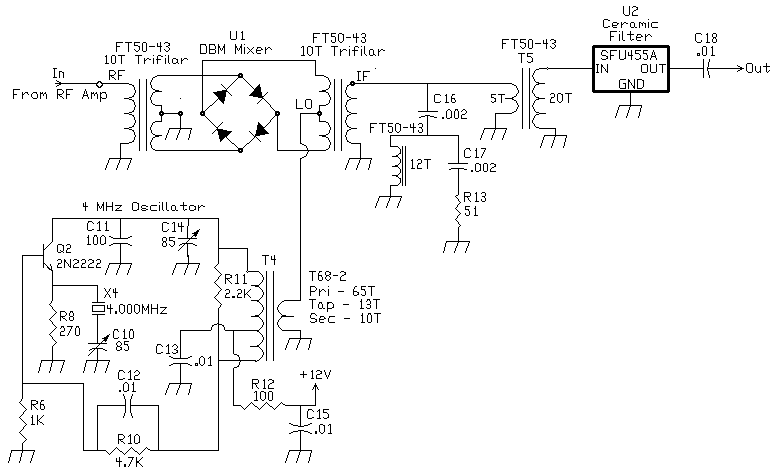

On a related note, here's a teaser article blurb about a continuously-variable crystal filter with bandwidth from 2 to 7 kHz. This filter, with bandwidth variable from a few hundred Hz to 10 kHz, fits in well with my plans for a general coverage receiver capable both of single-signal CW reception as well as AM SWBC.
Crystal filter design on line how to#
It's also not clear to me how to align the filter in practice - more study of the simulator is needed. Loaded tank Q (f/bandwidth) must also be sufficient for the desired frequency and bandwidth, forcing the bandpass response to be wider (or the loaded tank Q higher, requiring less lossy L/C components) as the filter center frequency is increased. It does however require matching of crystal motional parameters, tank impedances, and input/output impedances. I've done some simulations of a simplified version of the above constant-k filter and it behaves as expected: continuously variable bandwidth with constant insertion loss. There are more-elegant ways of matching crystals, if you don't mind making the effort, but this method works for me. I buy crystals in bulk, 20 or more, and pick the number I need from the ones that are closest in frequency (you usually can find 4 in any 20 that are within 100 Hz or less). The capacitance range of the diodes is so great (I use MVAM108 or MVAM109 diodes) you'll surely get good results with any set of series-resonant crystals in the 4-8 MHz range. If you characterized your crystals you could calculate it, but it's just as easy to build-and-test. Yes, the range of bandwidths depends on the crystal frequency.

Crystal filter design on line portable#
The KX1 portable transceiver uses only 3. This snapshot of the Elecraft KX2 filter section tells you all you need to know. Hayward calculated values for fixed capacitors, Ten Tec simply replaced them with variable-capacitance diodes. I believe the idea originated at Ten Tec, as they have a patent on the circuit (US 5051711).īandwidth is determined by the values of the parallel capacitors. The method used in the Elecraft KX2 and other Elecraft transceivers evolved from the ladder filter designs popularized by Wes Hayward, W7ZOI. Qrp-gaijin wrote:Are there any other variable-bandwidth crystal filter circuits like this?


 0 kommentar(er)
0 kommentar(er)
